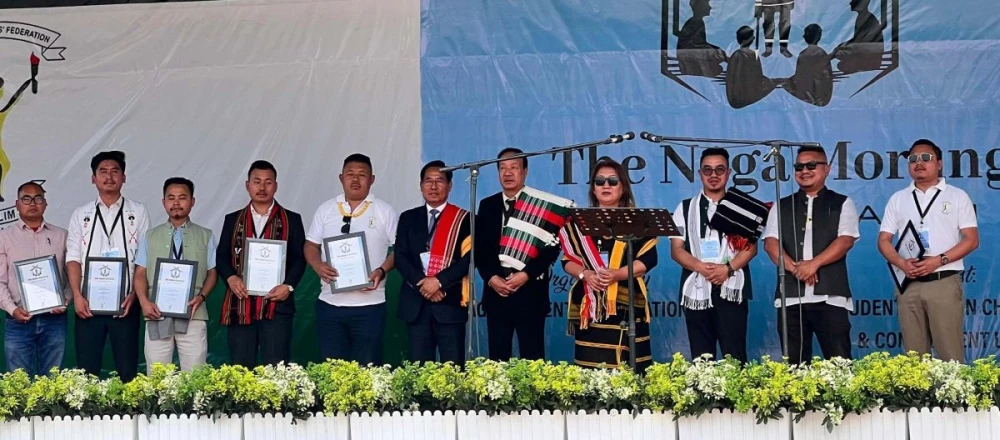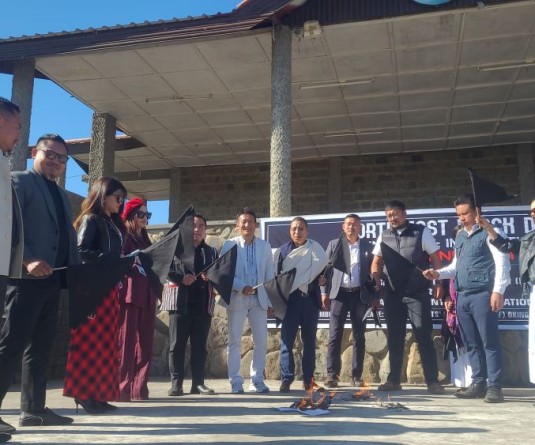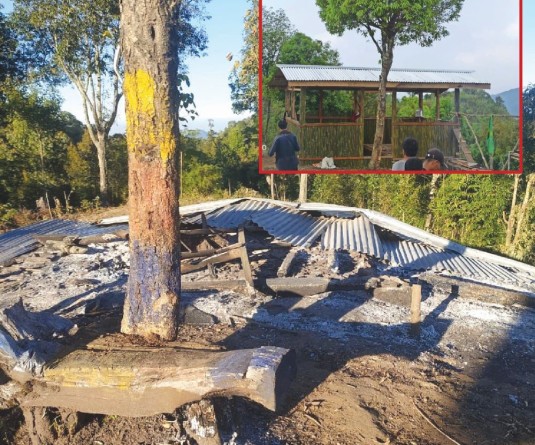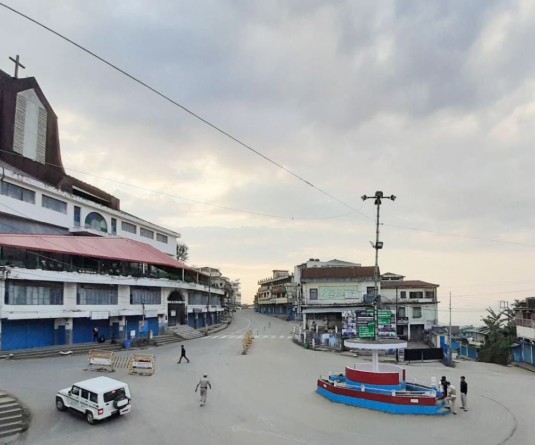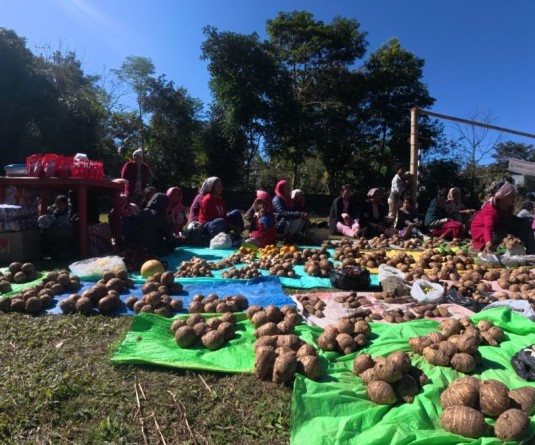The monolith of 'The 2nd Naga Morung' was unveiled by President of Naga Students' Federation, Medovi Rhi at Liwa Sarei Village, Chandel, Manipur on March 28.

NSUC hosts second edition of ‘The Naga Morung’
Morung Express News
Chandel | March 29
Former President of the NSF, Y Vikheho Swu, on Friday reiterated that the desire of the Nagas to live together under one administrative unit should not be ‘undermined or compromised.’
Swu, who addressed the august gathering of ‘The Naga Morung’ held at Liwa Sarei Village Ground, Chandel, Manipur on March 28, recounted the historical account of the Nagas as struggling people desiring to be free people, living as ‘we were’ before British colonialism came to the land.
Organised by the Naga Students’ Federation’s (NSF) held under the theme, ‘Kuknalim’ which means “victory to the people and land,” its second edition was hosted by the Naga Students’ Union Chandel (NSUC) and constituent units.
The former minister maintained that the Nagas have resisted any alien rule, which dates back to as early as 1832 when the first Anglo-Khonoma battle was fought. Prior to this battle and encounter with the British, the forebears actively resisted any form of intrusion to the land by the Ahoms, Dimasas, Kacharis, Manipuris and Burmese.
He described the Nagas as a group of tribes known for their distinct cultures, languages, dialects and rich traditions. They are inhabitants of the North-eastern part of India and inhabitants of a substantial portion of Burma now Myanmar. Aside from the state of Nagaland, which is wholly inhabited by the Naga people, a significant Naga population resides in Manipur, Arunachal Pradesh and Assam in India.
Briefing on the Naga history, Swu stated that the Naga leaders sensing India’s impending independence, met Mahatma Gandhi on July 19, 1947, who affirmed their right to be independent declaring, “Nagas have every right to be independent.”Following this, the Naga people declared independence on August 14, 1947, one day before India declared its independence. The declaration message was sent to the Indian government, the British Crown, the UN and foreign embassies.
To legitimise this, the Naga National Council (NNC) conducted a plebiscite on May 16, 1951, where 99.9% voted for an independent Naga homeland. However, tensions escalated in 1953 when Indian Prime Minister Nehru and Burmese Premier U Nu visited Kohima and Khamti, leading to arbitrary boundary demarcations. The Konyak country was divided, even cutting right through the middle of the house of the Angh (village chief) in Longwa village, triggering violent conflict between the Nagas and Indian forces.
The Naga National Movement led by AZ Phizo and the Naga National Council (NNC), aimed to integrate all Naga inhabited areas. To appease the Nagas, India signed the 16-Point Agreement in 1960, creating Nagaland with a provision allowing other Naga tribes to join if desired. In line with this, he said the Nagaland Legislative Assembly has repeatedly passed resolutions advocating for the integration of all Naga inhabited Areas, reaffirming their aspiration to live under one administrative unit.
However, the Indian government’s decision to scrap the Free Movement regime (FMR) along the Indo-Myanmar border has caused unrest among Nagas and other border communities. He said that efforts to resist border fencing and advocate for the continuation of the FMR must be intensified by the civil society organisations, tribal and student bodies.
Following two major agreements with the Indian government, the ‘Framework Agreement’ with the NSCN (IM) on August 3, 2015 and the ‘Agreed Position’ with the Naga National Political Groups in November 2017, Prime Minister Modi had declared in Dubai in 2015, “I want to talk about Nagaland. Less than a month ago, we moved ahead successfully with different factions of Nagaland after 60-70 years of insurgency. I am citing Nagaland because I want to tell people across the world, including the youth, that however complicated a problem might be, it can be solved through dialogue.” Swu contended that the Government of India must also have the political will and the sincerity to enter into a political settlement that is ‘honourable, acceptable and inclusive of all the Nagas.’
“The spontaneous display of optimism exhibited by PM Modi that particular day at Dubai should not be mere lip-service to an adoring crowd of expatriates. This conviction and belief in problem-solving through dialogue must be demonstrated in the political arena,” he stated.
At this critical juncture, he called upon the Naga civil organisations to take the lead, affirming that the strength of students and youth organisations, women organisations, human rights bodies, tribal councils and churches must be strengthened and reinforced. “In a perfect world, rights should be bestowed. But we do not live in a perfect world, therefore rights must be demanded and fought for,” he asserted, while adding that ultimately it is the voice of the people that will prevail.
During the event, solidarity messages were given by the leaders of the United Naga Council (UNC), Eastern Naga Students’ Federation (ENSF), and Eastern Naga Students’ Association (ENSA). Meanwhile, the President of NSUC, Ruwnglar Elly Anal delivered the welcome address.
